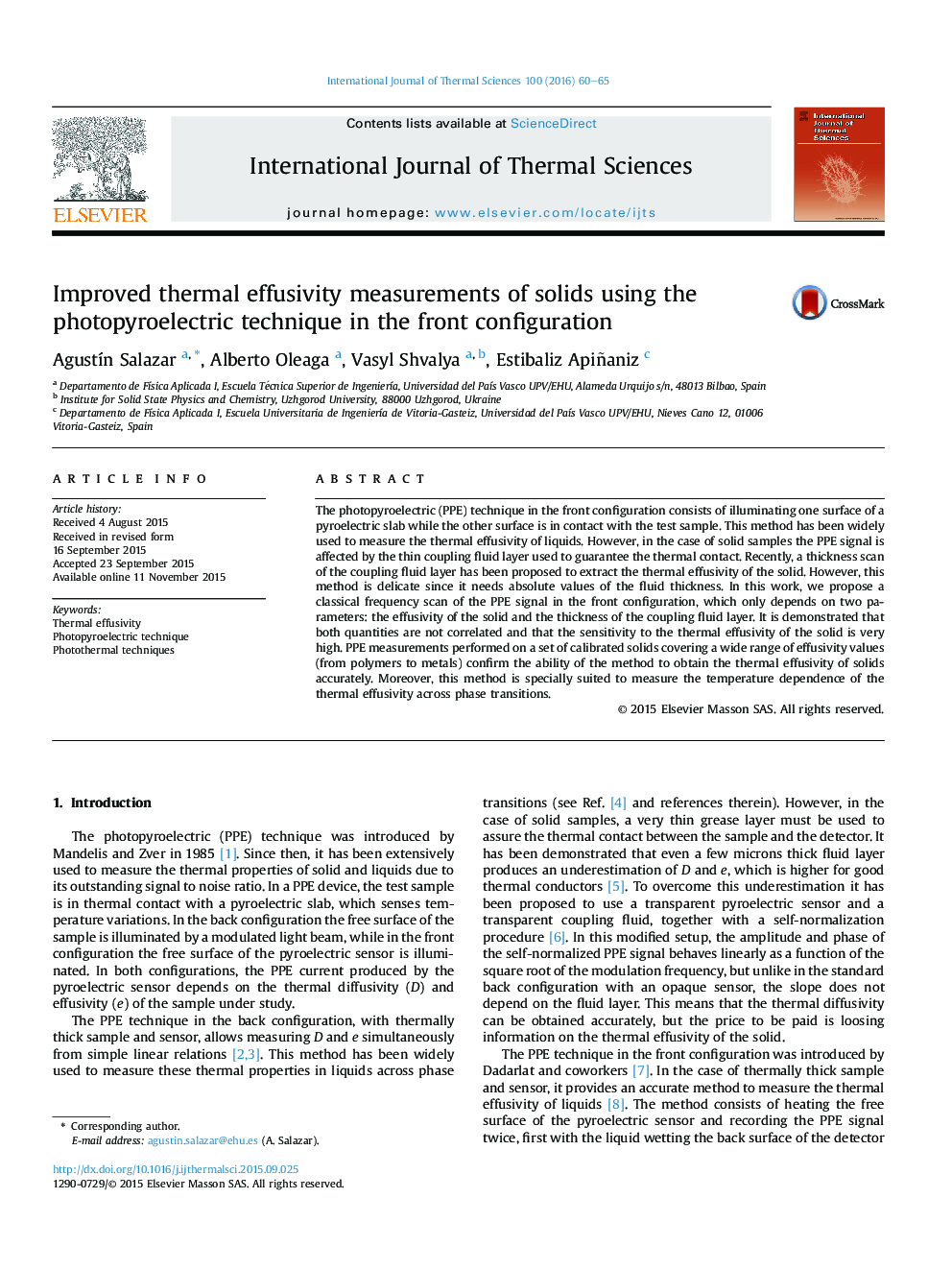| Article ID | Journal | Published Year | Pages | File Type |
|---|---|---|---|---|
| 669074 | International Journal of Thermal Sciences | 2016 | 6 Pages |
•A method to measure accurately the thermal effusivity of solids is proposed.•A frequency scan of the photopyroelectric phase gives the thermal effusivity.•The effect of the coupling fluid between sample and sensor is included.•We perform measurements on samples covering a wide range of effusivities.•This method allows measuring the thermal effusivity across phase transitions.
The photopyroelectric (PPE) technique in the front configuration consists of illuminating one surface of a pyroelectric slab while the other surface is in contact with the test sample. This method has been widely used to measure the thermal effusivity of liquids. However, in the case of solid samples the PPE signal is affected by the thin coupling fluid layer used to guarantee the thermal contact. Recently, a thickness scan of the coupling fluid layer has been proposed to extract the thermal effusivity of the solid. However, this method is delicate since it needs absolute values of the fluid thickness. In this work, we propose a classical frequency scan of the PPE signal in the front configuration, which only depends on two parameters: the effusivity of the solid and the thickness of the coupling fluid layer. It is demonstrated that both quantities are not correlated and that the sensitivity to the thermal effusivity of the solid is very high. PPE measurements performed on a set of calibrated solids covering a wide range of effusivity values (from polymers to metals) confirm the ability of the method to obtain the thermal effusivity of solids accurately. Moreover, this method is specially suited to measure the temperature dependence of the thermal effusivity across phase transitions.
